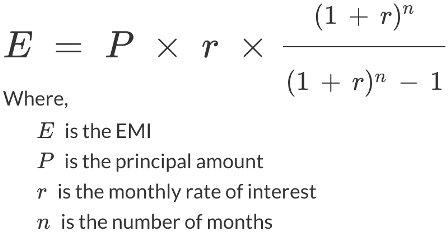Loan Comparison by Country: USA, UK, India, and Pakistan
When it comes to borrowing money, loan options can vary widely depending on where you live. Interest rates, eligibility, repayment terms, and even the type of loans available are influenced by national policies and financial systems. A proper loan comparison not only helps borrowers find the best deal but also highlights how lending cultures differ across countries. In this article, we’ll explore how loans work in the USA, UK, India, and Pakistan, giving you a clear side-by-side view to make smarter financial choices.
Why Loan Comparison Matters
Before diving into country-specific details, it’s important to understand why comparing loans is essential.
Interest Rates Differ: Banks and lenders set rates based on central bank policies, inflation, and risk levels.
Eligibility Criteria Vary: Some countries prioritize credit scores, while others rely on income proofs or collateral.
Repayment Flexibility: Loan tenures can be as short as one year or stretch to 30 years depending on the market.
Hidden Fees: Processing fees, insurance, and penalties for prepayment differ across lenders.
By analyzing these factors, borrowers can save thousands of dollars or their local currency equivalent over a loan’s lifetime.
Overview Table for Quick Comparison
| Country | Common Loan Types | Average Personal Loan Interest Rate | Credit Score Importance | Loan Tenure (Typical) |
|---|---|---|---|---|
| USA | Personal, Auto, Mortgage, Student | 6% – 36% (personal loans) | Very High (FICO) | 2 – 30 years |
| UK | Personal, Mortgage, Business, Student | 3% – 25% | High (Experian, Equifax) | 1 – 35 years |
| India | Personal, Gold, Home, Education, Business | 9% – 24% | Moderate (CIBIL score) | 1 – 25 years |
| Pakistan | Personal, Islamic finance, Auto, Home | 14% – 25% | Moderate, income-driven | 1 – 20 years |
Loan Systems in the USA
Popular Loan Types
Personal Loans: Widely available through banks, credit unions, and fintech platforms.
Mortgage Options: The market is primarily shaped by fixed and adjustable-rate loans.
Student Loans: Federal vs private student loans have major differences in repayment flexibility.
Auto Financing: Lenders provide attractive deals for buying either new or used cars.
Key Features
Credit Score Driven: FICO scores (300–850) largely determine eligibility and interest rates.
Long Tenures: Mortgages may extend up to 30 years.
Federal Protection: Regulations from the Consumer Financial Protection Bureau (CFPB) ensure transparency.
Loan Systems in the UK
Popular Loan Types
Personal Loans: Often unsecured, with competitive APRs.
Mortgages: Fixed, tracker, and interest-only options are available.
Student Loans: Income-based repayment after graduation.
Business Loans: Government-backed options exist for SMEs.
Key Features
Transparent APRs: Borrowers must be shown the full Annual Percentage Rate before agreeing.
Credit Checks: Managed by agencies like Experian and Equifax.
Government Role: The Student Loans Company (SLC) manages higher education loans.
Loan Systems in India
Popular Loan Types
Personal Loans: Usually unsecured, but interest rates are higher than in Western countries.
Home Loans: Popular due to rising real estate demand.
Gold Loans: Unique to India, borrowers pledge gold jewelry as collateral.
Education Loans: Widely used for studying abroad.
Key Features
Credit Score: CIBIL (300–900) plays a crucial role.
Collateral-Based Lending: Gold loans and property-backed loans are common.
Government Initiatives: Subsidized loans for farmers and students under various schemes.
Loan Systems in Pakistan
Popular Loan Types
Personal Loans: Offered by both conventional and Islamic banks.
Home Loans: Supported by government housing initiatives.
Car Financing: Islamic and conventional options.
Business Lending: The State Bank of Pakistan provides schemes to encourage SME growth through financing.
Key Features
High Interest Rates: Due to inflation and central bank policies.
Shariah-Compliant Options: Islamic banking is a growing sector.
Documentation Heavy: Borrowers often need income proof, guarantors, and security.
Step-by-Step: How to Compare Loans Across Countries
Check Interest Rates: Compare APRs, not just the advertised rate.
Understand Loan Tenure: Shorter loans mean higher EMIs but lower total interest.
Review Credit Score Requirements: A good score can unlock better deals.
Calculate Hidden Costs: Processing fees, insurance, and penalties add up.
Look at Repayment Flexibility: Early repayment and refinancing options can save money.
FAQs About Loan Comparison
1. What is the best way to compare loans?
Compare APR, tenure, repayment flexibility, and hidden charges instead of just focusing on interest rates.
2. What makes loan interest rates in Pakistan higher than those in the United States?
Due to inflation, currency fluctuations, and higher lending risks in developing economies.
3. Do students find it simpler to obtain loans in the UK versus the USA?
Yes. The UK government directly supports higher education loans, while in the USA many borrowers rely on private lenders.
4. Do I need a credit score to get a loan in India?
Yes, but borrowers can still access collateral-based loans, such as gold loans, without needing an excellent CIBIL score.
5. What role does the government play in loans?
In all countries, central banks regulate lending rates and governments sometimes subsidize student, housing, or agricultural loans.
6. Are Islamic loans different from regular loans?
Yes. Islamic loans in Pakistan avoid interest (riba) and instead use profit-sharing or rental models.
7. Which country has the lowest personal loan rates?
The UK generally offers the lowest rates for unsecured personal loans compared to India and Pakistan.
8. Can foreigners apply for loans in these countries?
Yes, but eligibility depends on residency, visa status, and local regulations.
9. What documents are required for loans in South Asia?
Typically, ID proof, income statements, tax returns, and in some cases, guarantors.
10. Is refinancing common worldwide?
It’s very common in the USA and UK, less common in India and Pakistan due to limited refinancing options.
Conclusion
Loan comparison is not just about finding the lowest interest rate it’s about understanding the financial culture of each country. The USA and UK emphasize credit scores and transparent APRs, while India and Pakistan rely more on collateral, government programs, and Islamic finance principles. By carefully comparing factors like tenure, hidden costs, and repayment flexibility, borrowers can make informed decisions.






